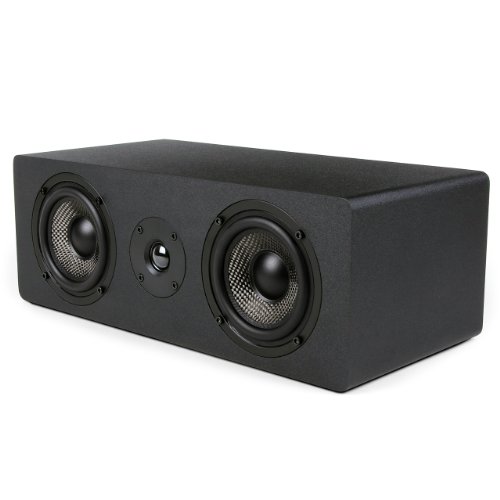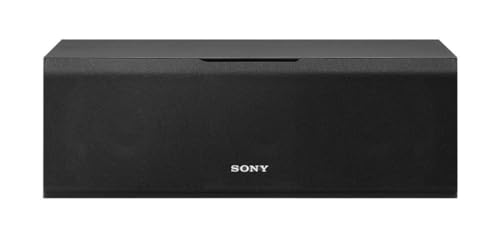Center Channel Speakers: Everything You Need To Know Before Buying Them
A Comprehensive Guide to Buying a Center Channel Speaker
A home theatre system cannot be really complete if the center channel speaker is missing. This is because almost all of the dialogues are played through the center speaker. It’s also where musical instruments and movie effects are more prominent. In fact, you can still use the center channel speaker on its own and it will still give you an outstanding sound quality. But this is only true if you pick the right speaker and that’s where it gets a little bit tricky. Because a good speaker is defined by more than just a beautiful physical appeal. It is a combination of various factors that we will be discussing in this post. But if after reading this you are still having a hard time selecting the best center channel speaker you can skip ahead to this post where we highlight the top 5 center speakers in the market right now. Here is a preview.
| # | Preview | Name | Maximum Output | Woofer | Tweeter | Impedance | Details |
|---|---|---|---|---|---|---|---|
| 1 |  | Klipsch R-25C | 400 Watt | IMG woofer | Linear Travel Suspension Tweeter | 8 ohm | Check Price |
| 2 |  | Micca MB42X-C | 475 Watt | Carbon Fibre Woofer | Silk Dome Tweeter | 4 ohms | Check Price |
| 3 |  | Polk Audio CS10 | 125 Watt | Bi-laminate Organic Fiber Woofer | Composite Dynamic Tweeter | 8 ohm | Check Price |
| 4 |  | Sony SSCS8 | 145 Watt | Foamed Honeycomb Mica Woofer | Polyester Tweeter | 6 ohms | Check Price |
| 5 |  | Pioneer SP-C22 | 90 Watt | Structured Surface Woofer | Soft Dome Tweeter | 8 ohms | Check Price |
| # | 1 |
| Preview |  |
| Name | Klipsch R-25C |
| Maximum Output | 400 Watt |
| Woofer | IMG woofer |
| Tweeter | Linear Travel Suspension Tweeter |
| Impedance | 8 ohm |
| Details | Check Price |
| # | 2 |
| Preview |  |
| Name | Micca MB42X-C |
| Maximum Output | 475 Watt |
| Woofer | Carbon Fibre Woofer |
| Tweeter | Silk Dome Tweeter |
| Impedance | 4 ohms |
| Details | Check Price |
| # | 3 |
| Preview |  |
| Name | Polk Audio CS10 |
| Maximum Output | 125 Watt |
| Woofer | Bi-laminate Organic Fiber Woofer |
| Tweeter | Composite Dynamic Tweeter |
| Impedance | 8 ohm |
| Details | Check Price |
| # | 4 |
| Preview |  |
| Name | Sony SSCS8 |
| Maximum Output | 145 Watt |
| Woofer | Foamed Honeycomb Mica Woofer |
| Tweeter | Polyester Tweeter |
| Impedance | 6 ohms |
| Details | Check Price |
| # | 5 |
| Preview |  |
| Name | Pioneer SP-C22 |
| Maximum Output | 90 Watt |
| Woofer | Structured Surface Woofer |
| Tweeter | Soft Dome Tweeter |
| Impedance | 8 ohms |
| Details | Check Price |
Last Update on 2026-01-05 at 03:16 / Affiliate links / Images from Amazon Product Advertising API
What’s the Difference between the Center Speaker and a Soundbar
A center speaker is part of a bigger system composed of left, right, center and two surround speakers that work together to give you an immersive listening experience. You could say it is the heart of the home theatre system. A soundbar, on the other hand, is a standalone speaker meant to improve the quality of your television set. Also, most of the center channel speakers require an external AV receiver or power amp in order to power while for the soundbar you just need to connect it to the TV and you are good to go.
Things You Should Know Before Chosing a Center Channel Speaker
One of the first thing to consider before buying the center speaker is the technical specifications. Unfortunately, many people do not really understand what these specs mean or how they impact the sound quality. Which is why I am going to break them down for you.
- Configuration ratio – This is the combination of numbers used to indicate how many drivers are on a speaker and whether it includes a subwoofer or not. For instance, 3.1 would mean the speaker has 3 sound drivers and comes with a subwoofer. On the other hand, 3.0 would still indicate a speaker with three drivers but without a subwoofer.
- Bi-wire capability – This is a new feature in the speakers where they come with two sets of connectors at the rear. One set is used for the high-frequency drivers while the other is used for low-frequency drivers. By having the woofer and tweeter currents running on different cables you are assured of clean sound with distinct highs and lows.
- Frequency response – The human ear will respond to sound frequencies anywhere from 20Hz all the way to 20 kHz. The frequency response of a speaker is, therefore, the ability of the speaker components to reproduce these frequencies in a way that does not irritate the human ear.
- Impedance – This is the speaker resistance to the current being supplied by the amplifier or receiver. This, therefore, means the lower the impedance the more power the amp can supply. Which is great to the point where the amp cannot produce any more power in which case it blows. You should, therefore, ensure that the amp load is not less than the stated nominal impedance of your speaker.
Checking the Compatibility
If you are buying a center channel speaker to complete your home theatre system then we highly recommend that you purchase one that matches with your other speakers. Every manufacturer uses different components to assemble their speaker which means different speakers will have different ways of reproducing various frequencies. When you choose the same manufacturer you can be assured the sound transition will be smooth. However, some of the speakers are quite versatile and will still perfectly blend with different speaker types.
Crossover Coverage
One of the biggest determiner of how well a center channel speaker sounds is the quality of the crossover system that is incorporated. A poor implementation of the crossover will always result in an incoherent dialogue and is always easy to notice. In fact, the best design for a center channel speaker that facilitate s an effective crossover is the three-way speaker. That is two woofers separated by a tweeter and a mid-ranger speaker stacked on top of one another which is usually more expensive than the two-way speaker system. (Woofer-tweeter-woofer)
What is it going to be used for
Will the speaker be used to listen to music or watch movies? If it’s mainly for music then this is something you should know. Most songs are recorded in stereo sound meaning they only utilize the left and right channel. Therefore, in case, your sound system is set to surround sound you may have to change the settings to recognize stereo sound in order to get the best out of the music.
Room Size and Seating Arrangements
The angle at which you listen to a speaker has a very big effect on how well you hear the sound. This is due to sound lobing that occurs when sound waves cross each other before reaching you. For this reason, if your room is quite big you may have to opt for a bigger speaker that offers a wider listening angle.





